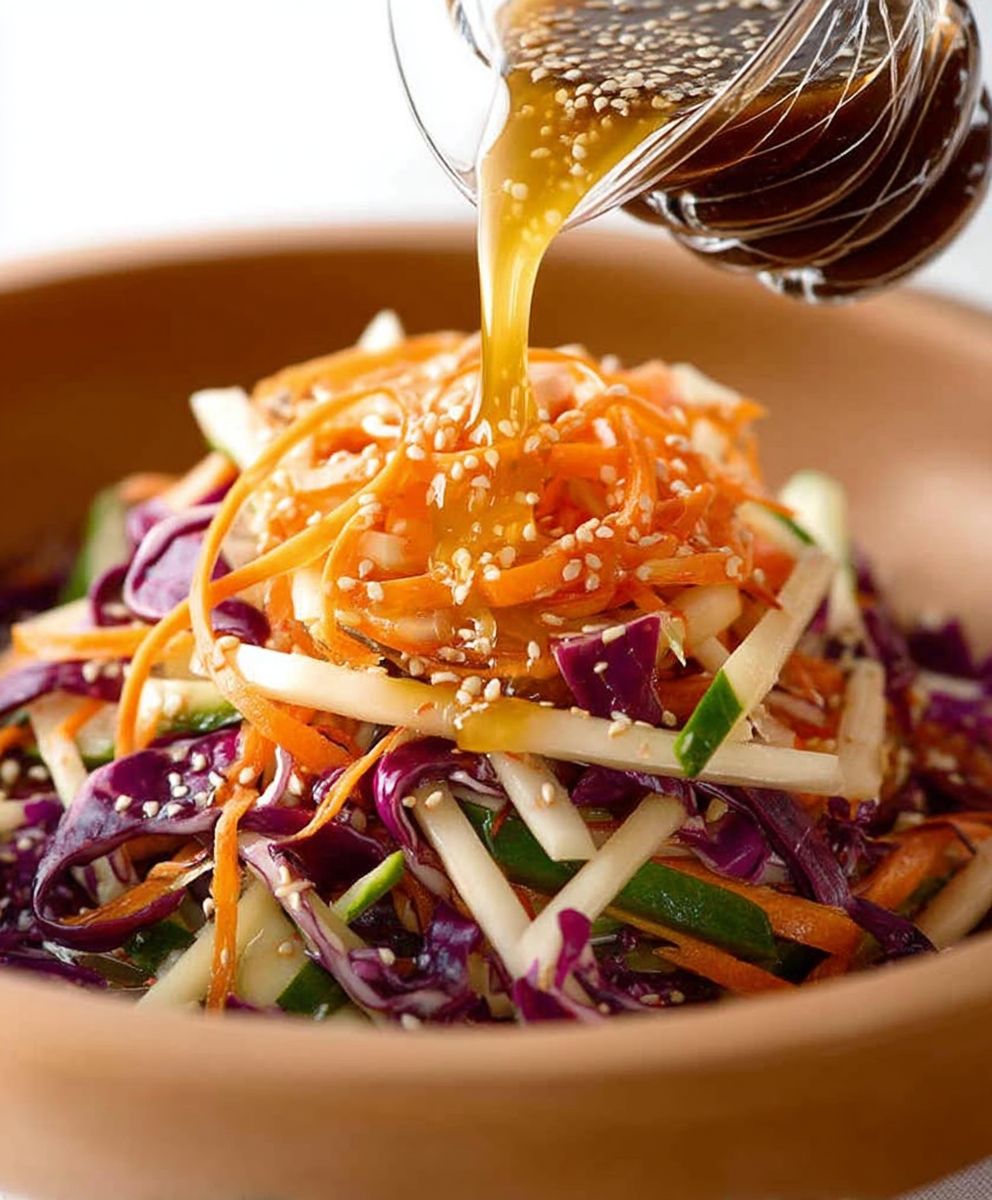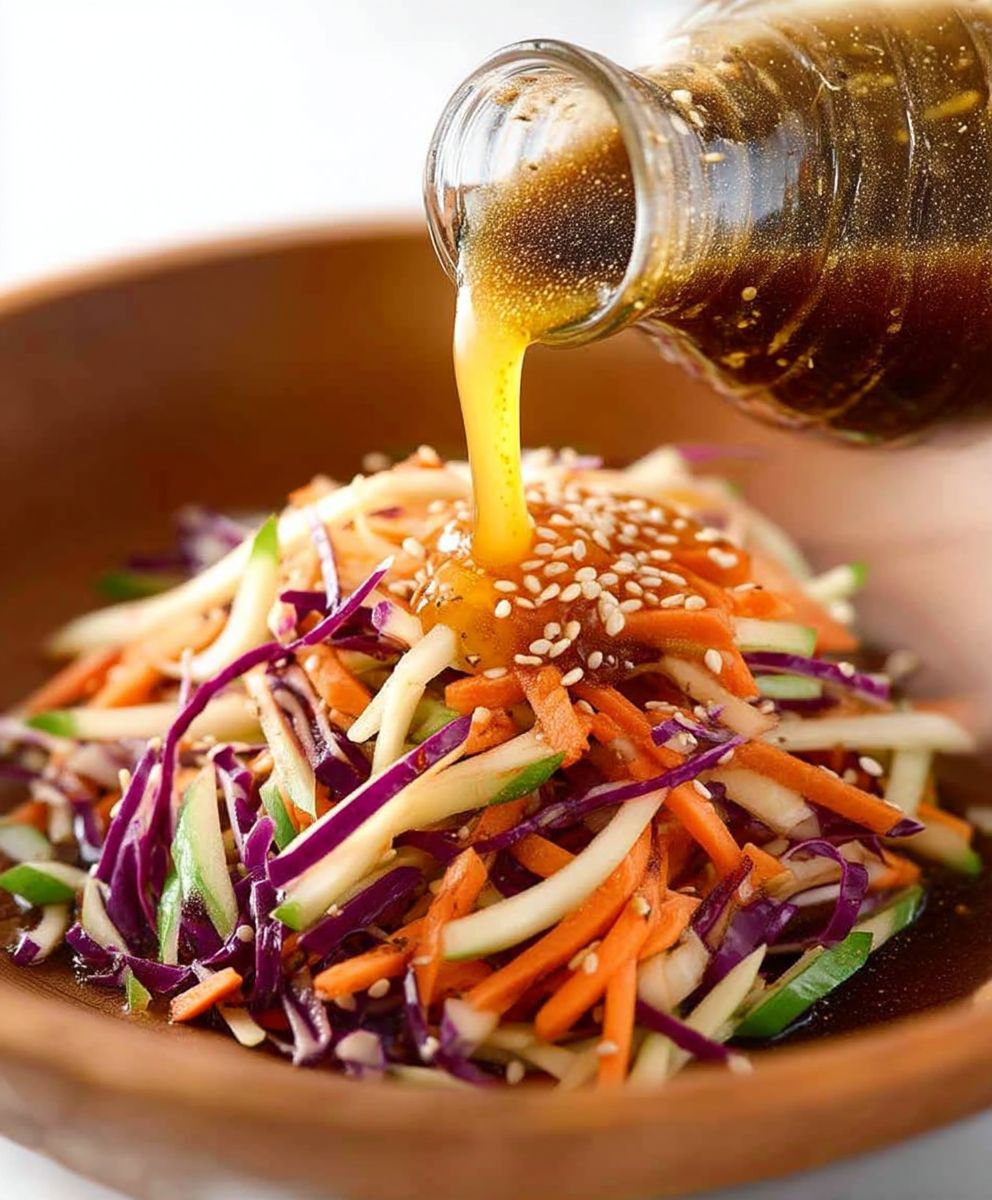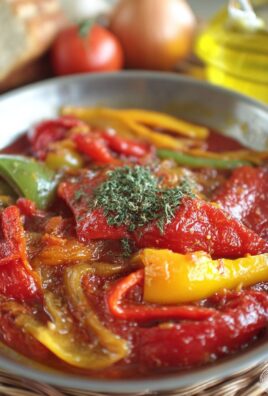Asian Sesame Dressing: Prepare to elevate your salads, noodles, and grilled vegetables to a whole new level of deliciousness! Have you ever craved that perfect balance of savory, sweet, and tangy in a single bite? This dressing delivers precisely that, and it’s incredibly easy to make at home.
Sesame oil, a key ingredient in Asian Sesame Dressing, has been a staple in Asian cuisine for centuries. Its rich, nutty flavor is deeply ingrained in culinary traditions across the continent, from China and Japan to Korea and beyond. It’s not just about taste, though; sesame seeds are also packed with nutrients, adding a healthy boost to your meal.
What makes this dressing so irresistible? For starters, it’s incredibly versatile. Drizzle it over a crisp salad for a light and refreshing lunch, toss it with soba noodles for a quick and satisfying dinner, or use it as a marinade for grilled chicken or tofu. The combination of toasted sesame oil, soy sauce, rice vinegar, and a touch of sweetness creates a symphony of flavors that dance on your palate. Plus, it’s quick to whip up, making it perfect for busy weeknights. I find that once you try this homemade version, you’ll never go back to store-bought again! Get ready to experience the magic of this flavorful and easy-to-make dressing.
Ingredients:
- 1/4 cup rice vinegar
- 2 tablespoons soy sauce (low sodium preferred)
- 2 tablespoons sesame oil
- 1 tablespoon honey (or maple syrup for vegan option)
- 1 tablespoon grated fresh ginger
- 1 clove garlic, minced
- 1 teaspoon sesame seeds (toasted, optional)
- 1/2 teaspoon red pepper flakes (optional, for a little heat)
- 2 tablespoons neutral oil (such as avocado, grapeseed, or vegetable oil)
- 1 tablespoon water (if needed, to thin the dressing)
- Pinch of salt, to taste
- Freshly ground black pepper, to taste
Preparing the Asian Sesame Dressing:
- Combine the Base Ingredients: In a medium-sized bowl, whisk together the rice vinegar, soy sauce, sesame oil, honey (or maple syrup), grated ginger, and minced garlic. Make sure the honey dissolves completely into the other liquids. This forms the flavorful base of our dressing. I like to use a whisk for this, but a fork works just fine too!
- Add the Sesame Seeds and Red Pepper Flakes (Optional): If you’re using toasted sesame seeds, add them to the bowl now. They’ll add a lovely nutty flavor and a bit of texture. If you want a little kick, add the red pepper flakes as well. Remember, you can always add more later, so start with a small amount.
- Emulsify the Dressing: This is the key to a smooth and well-combined dressing. Slowly drizzle in the neutral oil (avocado, grapeseed, or vegetable oil) while continuously whisking. The goal is to create an emulsion, where the oil and vinegar combine into a stable mixture. If you add the oil too quickly, the dressing might separate. I find that a slow and steady drizzle works best.
- Adjust the Consistency: If the dressing is too thick for your liking, add a tablespoon of water at a time until you reach your desired consistency. Remember, it’s always easier to add more water than to take it away!
- Season to Taste: Now it’s time to taste and adjust the seasoning. Add a pinch of salt and freshly ground black pepper to taste. You might also want to add a little more honey if you prefer a sweeter dressing, or a little more rice vinegar if you prefer a tangier dressing. Don’t be afraid to experiment and make it your own!
- Let the Flavors Meld: For the best flavor, cover the bowl and refrigerate the dressing for at least 30 minutes before using. This allows the flavors to meld together and deepen. You can even make it a day or two in advance!
Tips and Variations:
- Toasting Sesame Seeds: To toast sesame seeds, place them in a dry skillet over medium heat. Cook, stirring frequently, until they are lightly golden brown and fragrant, about 3-5 minutes. Be careful not to burn them!
- Ginger Paste: If you don’t have fresh ginger, you can use ginger paste. Start with about 1 teaspoon and adjust to taste.
- Garlic Powder: If you don’t have fresh garlic, you can use garlic powder. Start with about 1/4 teaspoon and adjust to taste.
- Spicy Asian Sesame Dressing: For a spicier dressing, add more red pepper flakes or a dash of sriracha.
- Creamy Asian Sesame Dressing: For a creamier dressing, add 1-2 tablespoons of tahini or mayonnaise.
- Vegan Asian Sesame Dressing: Make sure to use maple syrup instead of honey.
- Storage: Store the dressing in an airtight container in the refrigerator for up to 1 week. The oil may solidify in the refrigerator, so let the dressing sit at room temperature for a few minutes before using, or shake well to re-emulsify.
Serving Suggestions:
This Asian Sesame Dressing is incredibly versatile and can be used in a variety of ways. Here are a few of my favorite serving suggestions:
- Salads: Drizzle it over your favorite salads, such as a simple green salad, a chopped salad with vegetables and grilled chicken or tofu, or an Asian-inspired slaw.
- Noodles: Toss it with cooked noodles, such as soba noodles, udon noodles, or ramen noodles, for a quick and easy meal. Add some vegetables, protein, and a sprinkle of sesame seeds for a complete dish.
- Vegetables: Use it as a dipping sauce for raw vegetables, such as carrots, cucumbers, and bell peppers. Or, drizzle it over roasted vegetables, such as broccoli, Brussels sprouts, or sweet potatoes.
- Protein: Marinate chicken, tofu, or fish in the dressing before grilling, baking, or stir-frying. It adds a delicious flavor and helps to keep the protein moist.
- Rice Bowls: Drizzle it over rice bowls with your favorite toppings, such as avocado, edamame, and a fried egg.
- Dumplings: Serve it as a dipping sauce for dumplings, potstickers, or spring rolls.
Detailed Ingredient Breakdown:
Rice Vinegar:
Rice vinegar is a mild and slightly sweet vinegar made from fermented rice. It’s a staple ingredient in Asian cuisine and adds a tangy flavor to the dressing. If you don’t have rice vinegar, you can substitute it with white wine vinegar or apple cider vinegar, but the flavor will be slightly different.
Soy Sauce:
Soy sauce is a salty and umami-rich sauce made from fermented soybeans. It adds depth of flavor to the dressing. I prefer to use low-sodium soy sauce to control the saltiness. If you’re gluten-free, you can use tamari, which is a gluten-free soy sauce alternative.
Sesame Oil:
Sesame oil is a flavorful oil made from sesame seeds. It has a distinct nutty flavor and aroma that is essential to Asian cuisine. There are two types of sesame oil: light sesame oil and toasted sesame oil. Toasted sesame oil has a stronger flavor and is typically used as a finishing oil. I recommend using toasted sesame oil for this dressing.
Honey (or Maple Syrup):
Honey adds sweetness and helps to balance the acidity of the vinegar and soy sauce. If you’re vegan, you can substitute it with maple syrup or agave nectar. You can also use a sugar substitute like stevia, but the flavor will be slightly different.
Fresh Ginger:
Fresh ginger adds a warm and spicy flavor to the dressing. I recommend using fresh ginger for the best flavor. You can grate it using a microplane or a fine grater. If you don’t have fresh ginger, you can use ginger paste or ground ginger, but the flavor will be less intense.
Garlic:
Garlic adds a pungent and savory flavor to the dressing. I recommend using fresh garlic for the best flavor. Mince it finely before adding it to the dressing. If you don’t have fresh garlic, you can use garlic powder, but the flavor will be less intense.
Sesame Seeds:
Sesame seeds add a nutty flavor and a bit of texture to the dressing. I recommend toasting them before adding them to the dressing to enhance their flavor. You can toast them in a dry skillet over medium heat until they are lightly golden brown and fragrant.
Red Pepper Flakes:
Red pepper flakes add a touch of heat to the dressing. If you don’t like spicy food, you can omit them. You can also use a dash of sriracha or chili oil for a similar effect.
Neutral Oil:
A neutral oil, such as avocado oil, grapeseed oil, or vegetable oil, helps to emulsify the dressing and create a smooth and creamy texture. You can use any neutral oil that you have on hand. Olive oil is not recommended, as its strong flavor can overpower the other ingredients.
Water:
Water is used to thin the dressing if it is too thick. You can add a tablespoon of water at a time until you reach your desired consistency.
Salt and Pepper:
Salt and pepper are used to season the dressing to taste. Be sure to taste the dressing and adjust the seasoning as needed.

Conclusion:
This Asian Sesame Dressing isn’t just another salad dressing; it’s a flavor explosion waiting to happen, and trust me, you absolutely need it in your life! The perfect balance of savory, sweet, and tangy notes, coupled with that delightful sesame aroma, elevates everything it touches. I’ve been making this dressing for years, and it’s become a staple in my kitchen because it’s so incredibly versatile and easy to whip up. Seriously, you can have this ready in under five minutes, which is a huge win in my book.
But why is it a must-try? Beyond the incredible taste, it’s the sheer adaptability of this recipe that makes it shine. It’s not just for salads, although it transforms a simple green salad into something truly special. Think about drizzling it over grilled chicken or fish for an instant burst of flavor. Toss it with cold noodles for a quick and satisfying lunch. Use it as a marinade for tofu or vegetables before grilling or roasting. The possibilities are endless!
And speaking of possibilities, let’s talk variations! Feeling adventurous? Add a pinch of red pepper flakes for a touch of heat. Want a creamier dressing? Whisk in a tablespoon of tahini. For a sweeter dressing, increase the honey or maple syrup slightly. If you prefer a more pronounced ginger flavor, grate in a little extra fresh ginger. You can even experiment with different types of vinegar, like rice vinegar or apple cider vinegar, to find your perfect flavor profile. I personally love adding a squeeze of lime juice for an extra zing!
Serving suggestions? Oh, where do I even begin? As I mentioned, it’s fantastic on salads, especially those with Asian-inspired ingredients like shredded cabbage, carrots, edamame, and crunchy wonton strips. It’s also amazing as a dipping sauce for spring rolls or dumplings. Try drizzling it over a poke bowl for an extra layer of flavor. And if you’re looking for a quick and easy side dish, toss some steamed broccoli or green beans with this dressing you won’t be disappointed. I even use it as a glaze for salmon sometimes it’s that good!
I truly believe that this Asian Sesame Dressing will become a go-to recipe in your kitchen, just like it has in mine. It’s a simple, flavorful, and versatile dressing that can elevate any meal. It’s also a fantastic way to introduce new flavors to your family and friends.
So, what are you waiting for? Grab your ingredients and give this recipe a try! I’m confident that you’ll love it as much as I do. And more importantly, I’d love to hear about your experience! Did you try any variations? What did you serve it with? Share your thoughts and photos in the comments below. I can’t wait to see what culinary creations you come up with using this amazing dressing. Happy cooking! Let me know if you have any questions, and I’ll do my best to answer them. Enjoy!
Asian Sesame Dressing: The Ultimate Guide to Flavor & Recipes
A flavorful and versatile Asian Sesame Dressing perfect for salads, noodles, vegetables, and more! Easy to make and customizable to your taste.
Ingredients
- 1/4 cup rice vinegar
- 2 tablespoons soy sauce (low sodium preferred)
- 2 tablespoons sesame oil
- 1 tablespoon honey (or maple syrup for vegan option)
- 1 tablespoon grated fresh ginger
- 1 clove garlic, minced
- 1 teaspoon sesame seeds (toasted, optional)
- 1/2 teaspoon red pepper flakes (optional, for a little heat)
- 2 tablespoons neutral oil (such as avocado, grapeseed, or vegetable oil)
- 1 tablespoon water (if needed, to thin the dressing)
- Pinch of salt, to taste
- Freshly ground black pepper, to taste
Instructions
- Combine the Base Ingredients: In a medium-sized bowl, whisk together the rice vinegar, soy sauce, sesame oil, honey (or maple syrup), grated ginger, and minced garlic. Make sure the honey dissolves completely into the other liquids.
- Add the Sesame Seeds and Red Pepper Flakes (Optional): If using toasted sesame seeds, add them to the bowl. If you want a little kick, add the red pepper flakes.
- Emulsify the Dressing: Slowly drizzle in the neutral oil (avocado, grapeseed, or vegetable oil) while continuously whisking.
- Adjust the Consistency: If the dressing is too thick, add a tablespoon of water at a time until you reach your desired consistency.
- Season to Taste: Add a pinch of salt and freshly ground black pepper to taste. Adjust honey or rice vinegar to your preference.
- Let the Flavors Meld: Cover the bowl and refrigerate the dressing for at least 30 minutes before using.
Notes
- Toasting Sesame Seeds: Toast sesame seeds in a dry skillet over medium heat, stirring frequently, until lightly golden brown and fragrant (3-5 minutes).
- Ginger/Garlic Substitutes: Use 1 teaspoon ginger paste or 1/4 teaspoon garlic powder as substitutes.
- Spicy Variation: Add more red pepper flakes or a dash of sriracha.
- Creamy Variation: Add 1-2 tablespoons of tahini or mayonnaise.
- Vegan Variation: Use maple syrup instead of honey.
- Storage: Store in an airtight container in the refrigerator for up to 1 week. Let sit at room temperature or shake well to re-emulsify before using.
- Serving Suggestions: Use on salads, noodles, vegetables, protein marinades, rice bowls, or as a dipping sauce for dumplings.




